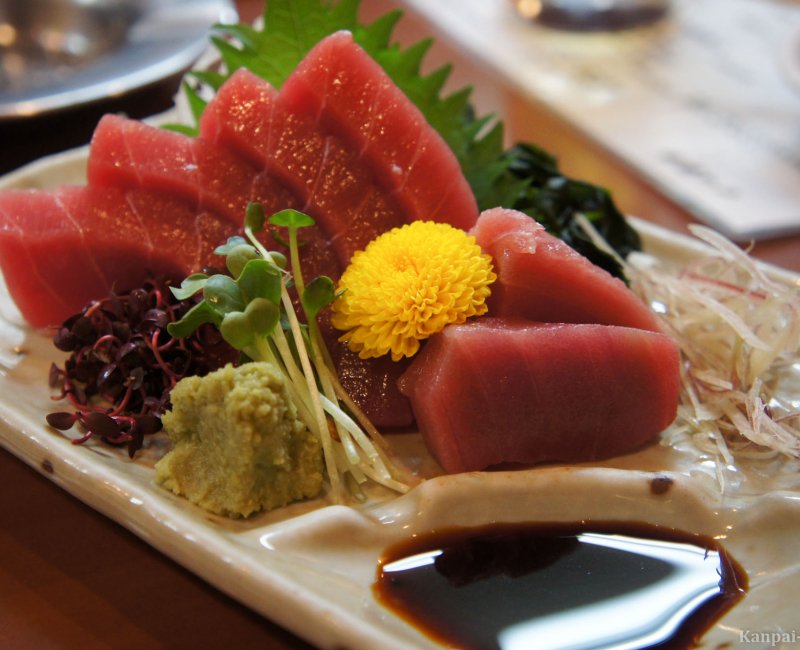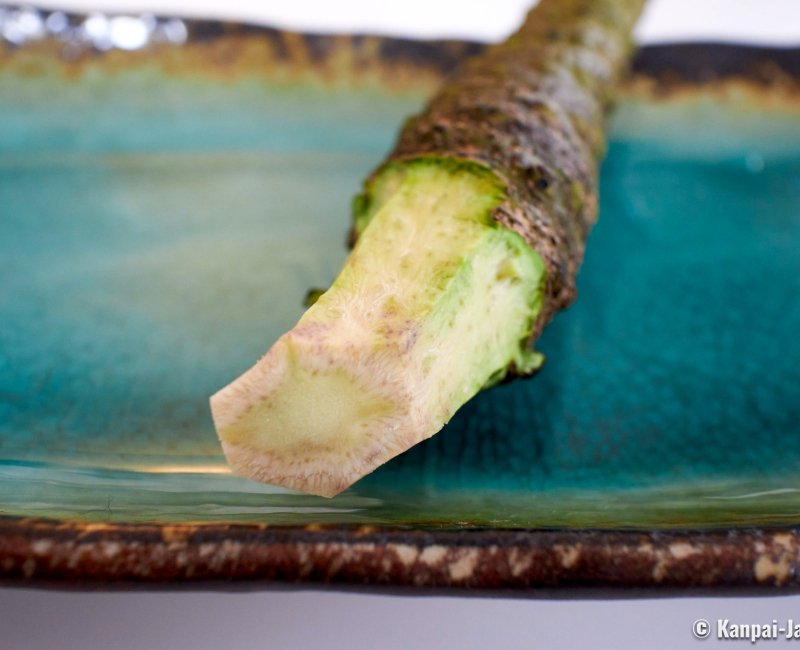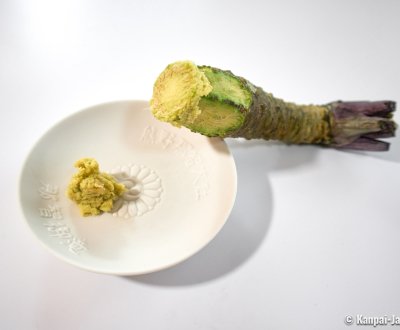Wasabi
The True Japanese Horseradish
Wasabi is a plant originating from Japan and used as a condiment in the Japanese cuisine, especially to enhance the taste of sushi. Its green paste texture and tangy aroma that stings the nose, like the Western yellow mustard, are quite known but very few people have actually eaten true, fresh and natural wasabi, which is only grown in a few regions of Japan.
Wasabi is an essential condiment of Japanese cuisine, and a perennial rhizome plant originating from the archipelago where it grows naturally in medium-sized mountains environments, with a moderate climate, in a well irrigated soil protected by shade. As its latin name Eutrema Japonicum (or Wasabia Japonica) involves, wasabi belongs to the same Brassica family as mustard, horseradish, turnip, and radish. Its taste being quite strong and spicy, it is often nicknamed "Japanese mustard" or "Japanese horseradish". The kanji of its name 山葵 yama aoi mean the "mountains’ hollyhock".
Its root, relatively short, firm and thick is eaten raw and grated into a paste, but its leaves and flowers that bloom in spring 🌸 can also be cooked, for example as ice cream or in tempura fritter. Wasabi perfectly associates with:
- Raw fish, prepared in sashimi or sushi 🍣 (directly spread between the rice and the fish slice),
- Grilled meat;
- Soba noodles, and,
- In addition to a dressing to season a salad.
80 % of the national production originates from Shizuoka Prefecture that specialized in the cultivation of wasabi, which is a fragile plant, long to grow and therefore expensive. The pure water springing from Mount Fuji 🗻 is notably used to irrigate the fields, some of which are open to guided tours organized by local farms. By the way, we recommend going in this region to discover the true taste of wasabi.

The true taste of wasabi
Indeed, most of those who already ate the famous fluorescent green paste served in restaurants or bought packaged in tubes at the supermarket never really had wasabi. For this condiment combines the plant Eutrema Japonicum with other ingredients to create an ersatz made from horseradish, oil, various additives, and green food coloring. The sting that induces crying and nose running is in fact not that characteristic of the 100% natural wasabi. Good to know, if a tube indicates "hon wasabi" it means it contains the highest amount of Wasabia Japonica (about 30% maximum).
When just grated, the root is of a lovely soft green, with a light and smooth texture that melts in the mouth. The aroma is also more subtle, with a fresh and penetrating smell that indeed reminds of horseradish. The true wasabi’s taste is softly pungent, not too strong (it does not irritate the nose) and pleasantly enhances the food it is associated with.
Green gold
Due to its difficult cultivation, wasabi is a luxury product, and it can be very expensive in Japan, in the same manner as the fruit baskets intended as presents to the loved ones. Some of the plants can be sold about ¥20,000 (~US$127.48) per unit, depending on the size of the root and its production method, namely:
- Sawa-wasabi: cultivated with the old-age method and of a very good quality, produced in the mountains;
- Oka-wasabi (hatake-wasabi): cultivated in a plain on the shore of a river for a more industrial quality.
The roots are sold in food markets, at the greengrocery and at the fresh food aisle of the supermarkets daily. For a first time tasting, we recommend trying the more affordable range, with wasabi roots costing around ¥ 2,000(~US$12.75). The quality of the fresh product is more than likely superior to the paste or worse, to the industrial horseradish powder.
Wasabi is also used in fields that are not connected to the food industry. For example, its characteristic aroma is spread by fire 🔥 alarms for deaf or hard of hearing persons in some schools in Japan.

How to prepare and preserve the root?
First peal the skin and clean the root thoroughly, then use a traditional wooden grate, covered with a shark skin. Then grate the root on the shark skin in circular movements while making the root turn on itself for an even shredding. This quite precise movement may require practice. Just stop when you have grated the wasabi quantity needed.
It is recommended to grate the wasabi at the last minute just before eating it and within the fifteen minutes following the preparation to thoroughly enjoy all its aromas and especially its natural and volatile pungency. The root can easily be preserved 4 to 5 days in the fridge and reused several times.
The importation of wasabi roots from Japan to the Western market is a rather expensive niche. We recommend travelers in Japan interested in this condiment to take the opportunity of their trip to visit a region of production and enjoy the true taste of the Japanese horseradish.

